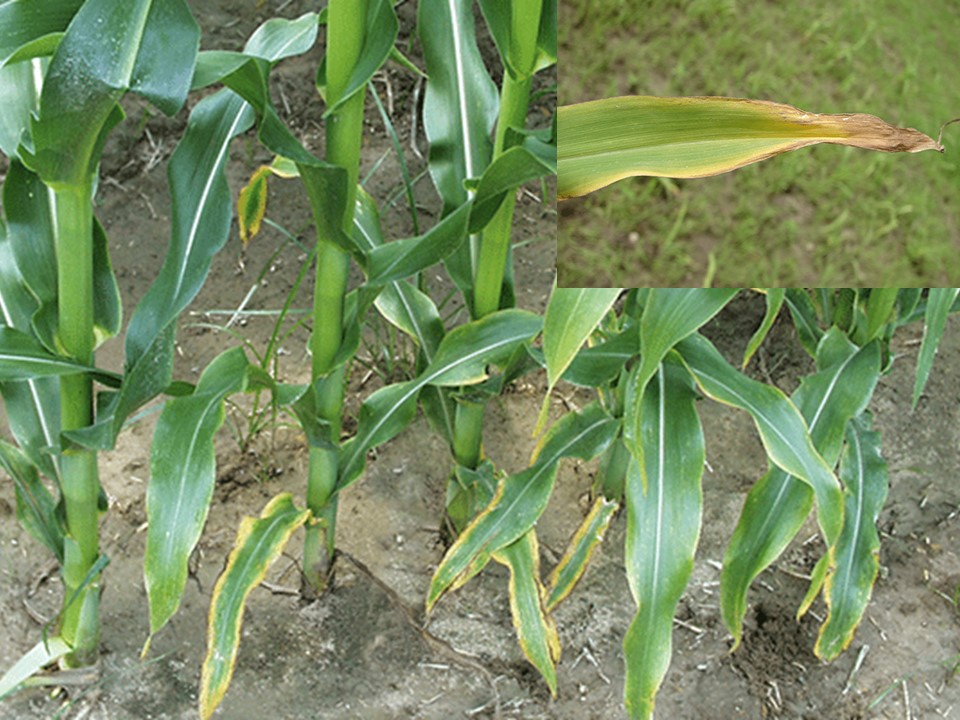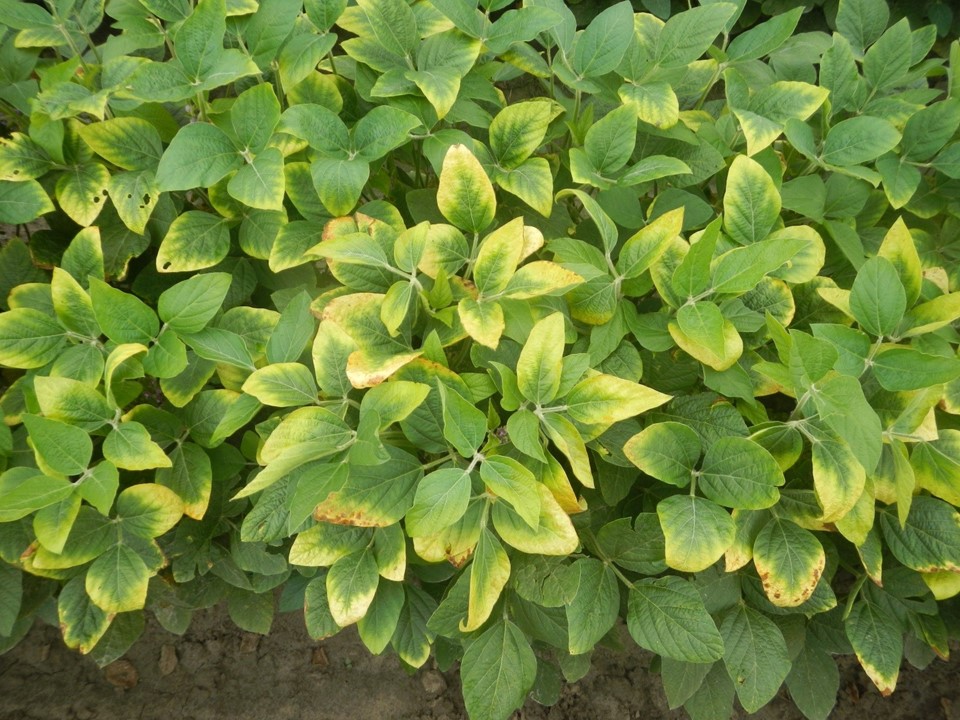| Week 3: Potassium |
| In the third installment in our series on nutrient deficiencies in corn and soybean, this week we take quick look at potassium: symptomology, sources, and common causes. |

| Potassium (K) is generally considered to be an immobile nutrient in the soil. More accurately stated, K has limited mobility in the soil, meaning that it is slightly more mobile than phosphorus, but significantly less mobile than other macronutrients like nitrogen (N) or sulfur (S).
However, K is very mobile within the plant. Therefore, symptoms first appear on lower (older) leaves. For both corn and soybean, yellowing will be observed starting at the leaf tip that then extends along the leaf margins down towards the base of the leaf. Do not confuse K deficiency with N deficiency. Remember, in corn, N deficiency begins at the leaf tip and follows the midrib down to the base of the leaf. In soybean, the entire leaf will begin to turn yellow. For both crops, K deficiency is restricted to the leaf tip and leaf margins. Since K has limited mobility in the soil, anything that restricts root growth may result in deficiency symptoms. Therefore, as with phosphorus (P), soils with adequate K may still show symptoms due to lack of soil moisture, excessively cold soils, soil compaction, root pruning, sidewall compaction, etc.. K deficiency usually occurs in later vegetative stages as plant demand increases. |
| Corn |
| Potassium Deficiency Symptomology
Leaves – Symptoms appear first on older (lower) leaves. Yellowing starts from leaf tip and progresses along leaf margins down toward leaf base. Tissue necrosis of leaf margins may occur in severe cases. Lodging later in the season is possible in sever cases. Plant and Leaf Tissue Deficiency Levels Early Growth – recently mature leaf K < 2.0%1 At Tassel – recently mature leaf ear K < 1.8%1 |

| Soybean |
| Potassium Deficiency Symptomology
Leaves – Symptoms appear first on older (lower) leaves. Yellowing along leaf margins that may turn necrotic (brown). Leaf veins will remain green. Plant and Leaf Tissue Deficiency Levels At Flowering – tissue K < 1.5%1 |
| Common Potassium Sources | ||
| Source | Analyses | % Phosphorus |
| Potassium magnesium sulfate | 0-0-22-23-11 | 22 |
| Potassium sulfate | 0-0-50-17 | 50 |
| Potassium nitrate | 13-0-44 | 44 |
| Muriate of potash | 0-0-60 | 60 |
| Common Causes of Potassium Deficiency |
| 1. Cold soils |
| 2. Compacted soils |
| 3. Sidewall compaction |
| 4. Potassium stratification |
| 5. Root pruning |
| 6. Anything affecting or restricting root growth |
| Corrective Measures | |
| Early Season | |
| Top dress application | |
| Late Season | |
| Foliar application | |
| *However, K deficiencies often “correct” themselves when soil conditions improve. A soil test from affected and unaffected areas/plants is required to discern from true soil K deficiency and plant deficiency due to the soil environment. Limited data is available regarding the efficacy and ROI for late-season foliar applications. | |
1Campbell R.A. 2013. Reference Sufficiency Ranges for Plant Analysis in Southern Region of the United States. Southern Cooperative Series Bulletin #394. North Carolina Department of Agriculture and Consumer Services Agronomic Division, Raleigh, NC.


